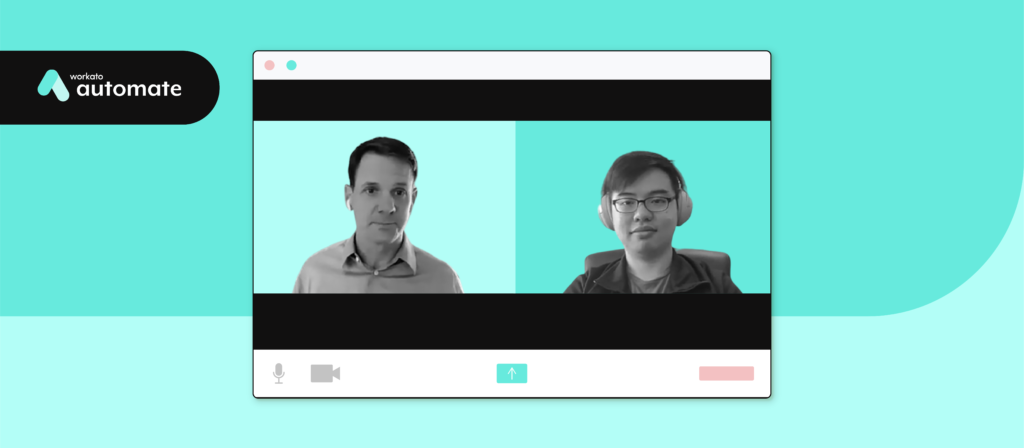We’ve strived to automate at scale since our inception.
This mission has led us to connect nearly 100 apps and build roughly 1,000 automations that tackle critical processes across lines of business, from lead routing to candidate sourcing to asset provisioning.
Carter Busse, our CIO, and Sen Rong Poh, our Sr. Manager of Business Applications and Enterprise Architecture, gave us an inside look at some of the automations we’ve built over the years and the results they’ve delivered during their session at Automate, “Workato on Workato: Our Approach to Wall-to-Wall automation”.
We’ll explore the automations they shared, but before we do, let’s break down how we’ve been able to automate at scale securely.
Want to catch everything they shared? You can watch the entire session by registering for it here.
The architecture and guardrails that allow to us engage in enterprise-wide automation securely
To ensure that our teams build and manage automations in ways that keep employee and client data safe, we’ve adopted a federated workspaces model.
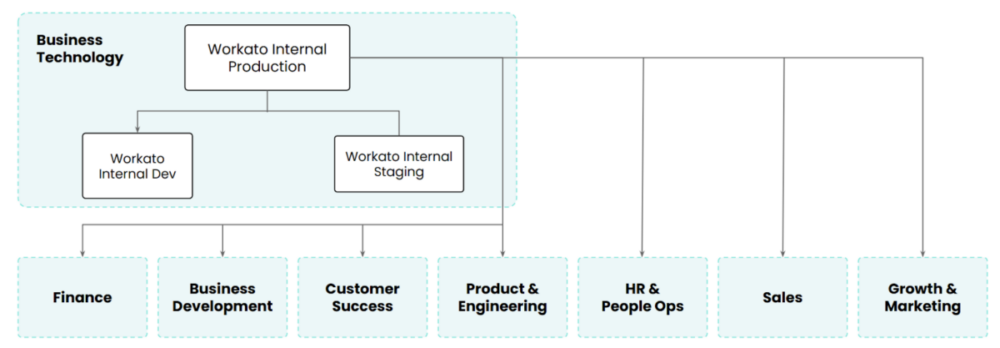
Using this model, lines of business are provided sub-workspaces, while the BT team serves as the admin for each environment. This allows the BT team to determine who goes into each workspace as well as audit users’ activities as they integrate their apps and build automations.
For more business-critical automations that impact multiple lines of business, BT works carefully to ensure that they function as intended—using our develop, production, and staging environments—before pushing them out to the appropriate sub-workspace(s).
Finally, in cases when employees need certain types of data but shouldn’t receive full access to the app it’s hosted in (for privacy and security reasons), our BT team provides them with the app’s API endpoint instead.
With this federated workspaces model in mind, let’s walk through a few of the automations we’ve built.
We’ve streamlined employee onboarding with HR Bot
To help our team kickstart the onboarding process as soon as a candidate signs their offer letter, we’ve built out an automation that works as follows:
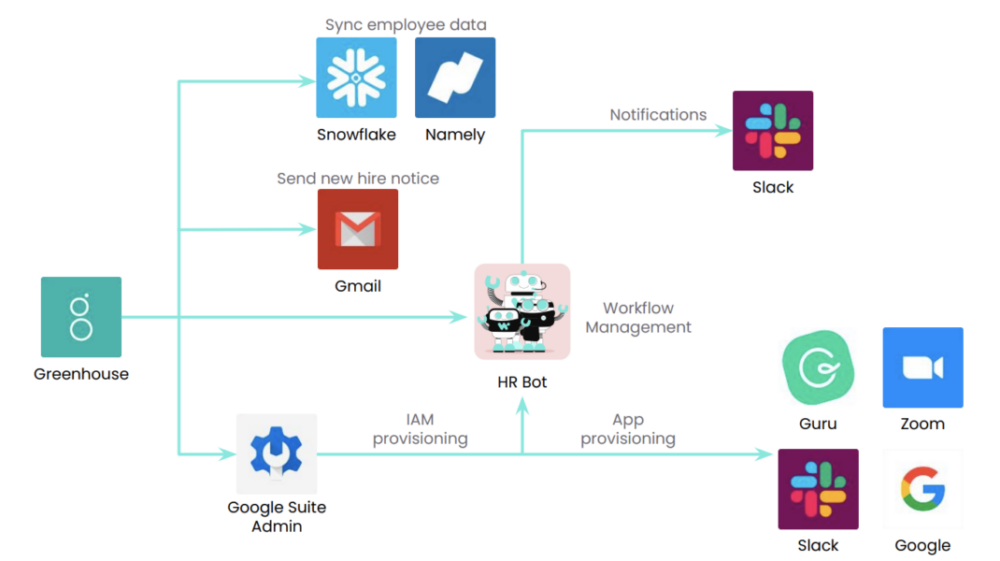
1. Once a candidate is marked as hired in our applicant tracking system (Greenhouse), the workflow gets triggered.
2. The data gets added to our data hub for employee information, Snowflake, and to our HRIS, Namely.
3. A new hire notice gets sent out via gmail, alerting the appropriate stakeholders that the new hire signed the offer letter (in addition to other pertinent information).
4. A user gets created in Google SSO.
5. Our HR Bot provisions the new hire with the applications they need by their first day (taking into account the new hire’s role), and then the chatbot notifies the manager in our business communications platform, Slack.
We’ve fast-tracked app provisioning with Firefighter Bot
To help our BT team save time and to equip employees with the apps they need, quickly, we’ve also automated app provisioning.
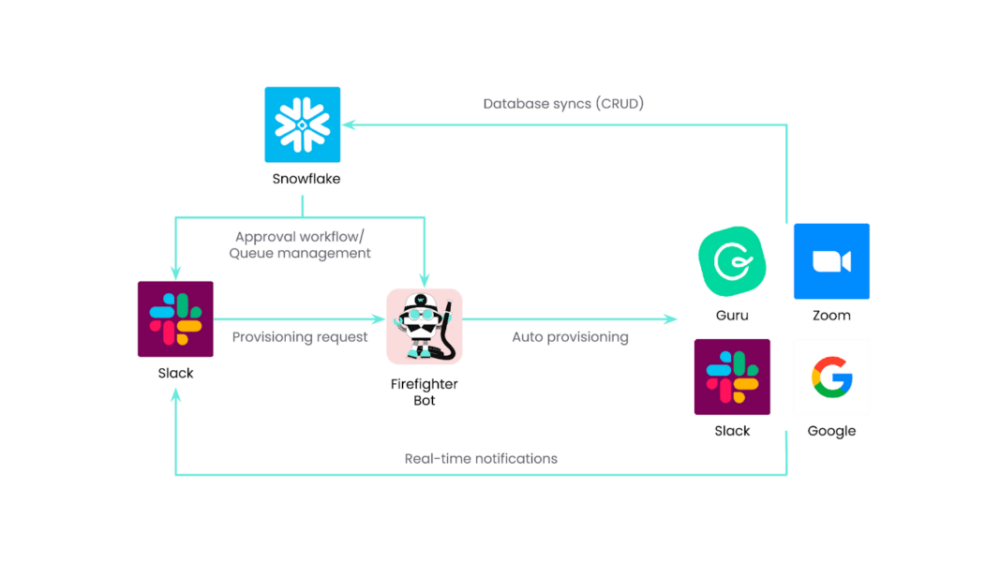
1. Once an employee requests access to an app in Slack, the workflow gets triggered.
2. Firefighter Bot notifies the manager of the request in Slack, where the manager can approve or reject the request with the click of a button.
3. Firefighter Bot notifies the BT team of the request in a specific Slack channel.
4. Once someone in the BT team approves the request in Slack, the information gets added to our employee database in Snowflake. Also, the initial requestor and the beneficiary (they may be the same person) get notified of the approval via Slack.
What kinds of results have we seen after automating this process?
The BT team can save dozens of hours every week, while requesters can get access to the apps they need 3 times faster.
We’ve automated app optimizations with Firefighter Bot
Our BT team is also tasked with optimizing our team’s use of SaaS apps over time—which involves determining when an employee no longer uses an app and removing their access to it.
To that end, here’s an automation BT built to manage our team’s use of SaaS apps:
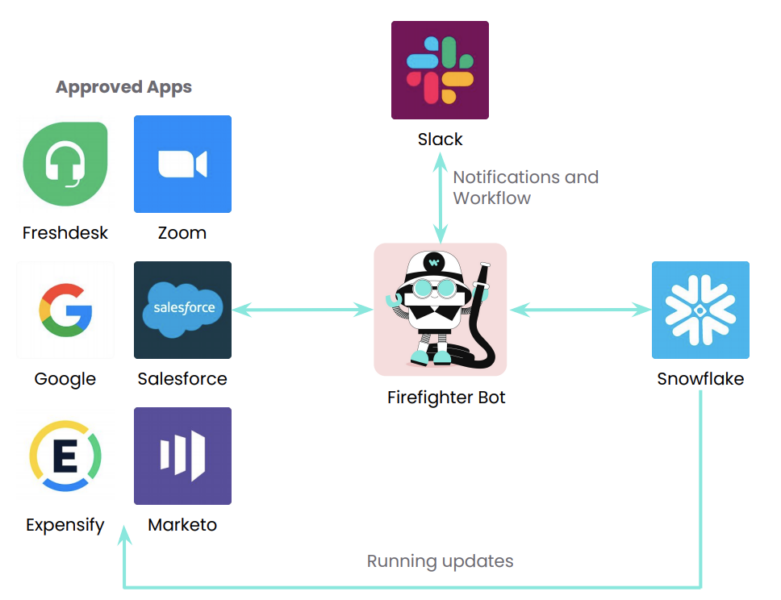
1. Using the Firefighter Bot in Slack, an employee in BT can choose which app they want to optimize.
2. Based on the usage conditions set up for that app, the bot messages a specific Slack channel that highlights which employees qualify for deprovisioning.
3. Someone in the channel can remove users, and then click “Notify users”.
4. Firefighter then notifies the users via Slack that they’re set to lose access to their current license of the app. The employee can accept by selecting “Acknowledge” or try to retain their current access to an app by choosing “I wish to retain my license”.
5. If the employee tries to retain their license, Firefighter notifies their manager, and if they approve of the employee’s wish to retain their license, the employee’s app access doesn’t change.
Though the automation is fairly straightforward, it’s allowed our organization to save $200k in the last year in licensing costs—all without sacrificing any loss in employee productivity.
Want to learn more about how we’re automating key business processes? You can get a more comprehensive look at the workflows we’ve streamlined for our People Ops team by downloading our ebook, “How We Transformed People Ops in Workato”.
